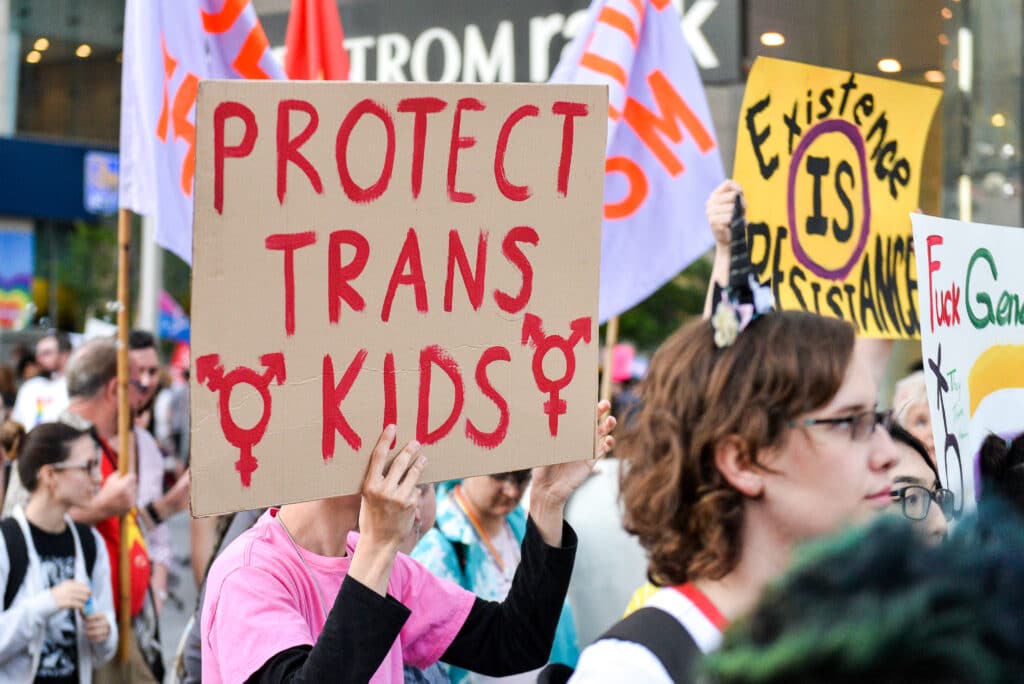Groundbreaking study reveals the obvious – that trans kids are who they say they are

A new study has found that the vast majority of people who come out as trans at a young age continue to identify as trans. (Envato/PinkNews)
A new study has fund that 97.5 per cent of children who come out as trans continue to identify as trans or non-binary after five years.
The research looked at the statistics of 317 early childhood social transitioners – 208 trans girls and 109 trans boys – and examined the rate at which these adolescents would “retransition” either to their gender assigned at birth or to a non-binary identity.
It found that over an average of five years after the beginning of their social transition, around 7.1 per cent had “retransitioned” at least once. Almost half of that figure – 3.5 per cent – began identifying as non-binary, rather than with a binary gender identity.
The percentage included a small group – around 1.3 per cent – of youths who had retransitioned to another identity before returning back to their original binary trans identity. Another 2.5 per cent of those who retransitioned went back to identifying as cisgender.
By the end of that period, around 94 per cent identified with a binary trans identity.

An activist raises a placard saying ‘protect trans kids’ during a protest. (Getty/Anatoliy Cherkasov)
Interestingly, the most common point where a child would choose to retransition occurred before the age of 10, while detransitions – where a person goes back to identifying with their assigned gender – occurred with kids whose social transition started before the age of six.
“The results suggest that retransitions are infrequent,” the article’s conclusion said. “More commonly, transgender youth who socially transitioned at early ages continued to identify that way.
“Nonetheless, understanding retransitions is crucial for clinicians and families to help make retransitions as smooth as possible.”
The sample of low retransition rates is consistent with a similar study that researchers cited, which spanned a seven-year period and found that most who had social transitioned did not retransition.
Study rubbishes anti-trans ‘social contagion’ argument
The introduction of the study includes a section on claims that the rise in trans youth seeking care is a direct result of social pressure caused by what anti-LGBTQ+ pundits typically call the “trans agenda”.
Groups that push this claim include the notorious gender-critical group Transgender Trend, which claims that youth who are “suffering from gender dysphoria” have been pressured by a trend of “the subjective idea of gender identity” to identify as trans.
Other organisations have also claimed that AFAB trans adolescents are disproportionately targeted by these pressures to become other trans men or non-binary in some capacity.
But, as the conclusion of the study conducted by Jack L. Turban, Brett Dolotina, Dana King, and Alex S. Keuroghlian stated, “there appears to be no disparity between trans youth”.
“The sex assigned at birth ratio of TGD (transgender and gender diverse) adolescents in the United States does not appear to favour AFAB adolescents and should not be used to argue against the provision of gender-affirming medical care for TGD adolescents,” it added.
It also found that rates of victimisation and suicidality were clearly higher among trans youth when compared to cis peers despite groups like Transgender Trend questioning the commonly used statistics showing the shockingly high number of suicides among transgender people.

